India, a land of rich history and culture, is dotted with architectural marvels that stand as testaments to the grandeur of its past. Among these, the Qutub Minar, located in the heart of Delhi, is a towering monument that has captured the imagination of visitors for centuries. Its intricate design, historical significance, and enduring presence make it a must-visit destination for history enthusiasts and travelers alike.
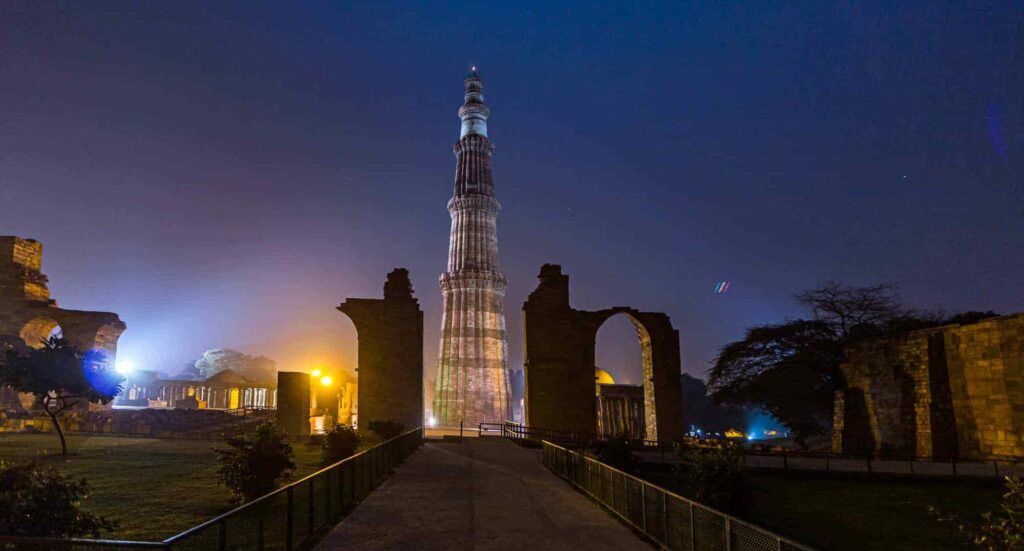
A Towering Marvel with a Rich History
Origins of Qutub Minar
The story of Qutub Minar began in the 12th century when Qutb-ud-din Aibak, the founder of the Delhi Sultanate, commissioned its construction in 1192. This imposing minaret, originally conceived as a victory tower, would soon become a symbol of architectural brilliance and cultural fusion.
Qutb-ud-din Aibak laid the foundation of this extraordinary structure, but he was only able to complete the basement and the first story during his reign. It was his son-in-law and successor, Shams-ud-din Iltutmish, who continued the work, adding three more stories to the minaret in 1220.
A Story of Reconstruction
The passing centuries brought both admiration and calamity to the Qutub Minar. In 1369, a lightning strike damaged the topmost story of the minaret. It was Firoz Shah Tughlaq who took on the task of reconstruction, adding the fifth and final story to the tower. During this time, Sher Shah Suri contributed by building the entrance to the Qutub Minar.
In 1505, another natural disaster struck as an earthquake shook the foundations of the minaret. Sikander Lodi took it upon himself to restore the top two stories with marble. The British also played a role in the minaret’s history, with Major Robert Smith of the British Indian Army overseeing its renovation in 1828. During this renovation, a pillared cupola was added to the fifth story, temporarily changing the minaret’s appearance.
In 1848, under the orders of Viscount Hardinge, the then Governor-General of India, the extra story was removed and reinstalled next to the minaret. However, it was in 1981, following a tragic accident that left 47 people dead inside the minaret due to an electricity failure, that access to its upper levels was restricted.
The Architectural Marvel of Qutub Minar
Dimensions and Materials
The Qutub Minar, with a height of 72.5 meters (238 feet), dominates the skyline of Delhi. Its base has a substantial diameter of approximately 47 feet, which gracefully narrows to just 9 feet at the top. Constructed primarily of red sandstone and marble, the minaret showcases the fusion of Persian, Islamic, and Indian architectural styles.
Ornate Details and Carvings
One cannot help but marvel at the intricate carvings and inscriptions that adorn the Qutub Minar. The lower three stories feature fluted designs, while the top two stories are simpler in style. Balconies supported by ornate brackets grace each distinct story. The architectural styles vary from the base to the top, reflecting the contributions of different rulers over the centuries.
The Qutub Minar is not merely a structure but a canvas narrating history through its bands of inscriptions and carved verses on its inside.
The Qutub Minar Complex
Beyond the towering minaret, the Qutub Minar Complex beckons visitors to explore its historical treasures. Here, you’ll encounter a collection of remarkable structures:
1. Quwwat-ul-Islam Mosque
Constructed by Qutb-ud-din-Aibak, the Quwwat-ul-Islam Mosque stands as a magnificent monument in its own right. It was built using materials salvaged from Hindu and Jain temples that were destroyed during the Islamic rule. This mosque is historically significant as the first mosque in India.
The mosque’s architecture boasts intricately carved pillars, beautiful arched gateways, and a spacious prayer hall.
2. The Iron Pillar of Chandragupta II
This enigmatic pillar, dating back to the 4th century, stands proudly in the courtyard of the Qutub Complex. It is renowned not only for its historical significance but also for its rust-resistant composition. Covered in detailed inscriptions, the Iron Pillar continues to captivate visitors.
3. Alai Darwaza
Alauddin Khilji left his mark on the Qutub Complex by constructing the Alai Darwaza in 1311. This imposing gateway, crafted from red sandstone and white marble, welcomes visitors from the southern side of the Quwwat-Ul-Islam Mosque.
4. Alai Minar
Alauddin Khilji had ambitious plans for the Alai Minar, intending it to be twice the height of the Qutub Minar. However, he only managed to complete the first floor of this monument before he died in 1316. Subsequent rulers left the Alai Minar unfinished, resulting in only the ground floor being built.
5. Tomb of Iltutmish
This elegant tomb, constructed in 1235, is dedicated to Sultan Iltutmish, who added three stories to the Qutub Minar. The tomb features exquisite stone carvings and intricate geometric patterns, making it a magnificent attraction within the complex.
6. The Madrasa
The Qutub Complex once served as an ancient educational institution, a center for Islamic learning during the medieval period. While its educational role has evolved, the remnants of its architectural grandeur remain.
7. Alauddin Khilji’s Tomb and Mosque
This beautiful tomb showcases intricate stone carvings and domes. Nearby, the mosque features graceful arches and tall minarets, representing Indo-Islamic architecture at its finest.
8. Qutub Festival
Each year, in November and December, the Qutub Festival breathes new life into this historic complex. A collaborative effort between Delhi Tourism and the Sahitya Kala Parishad, this three-day festival features a dazzling array of cultural performances and art forms. Renowned folk and classical musicians grace the stage, attracting both national and international attention to the magnificent Qutub Minar.
Food stalls offering delectable regional delicacies add to the vibrant atmosphere of the event, making it a delightful experience for all who attend.
Qutub Minar Delhi Photos/Images
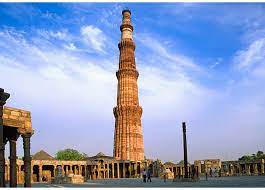
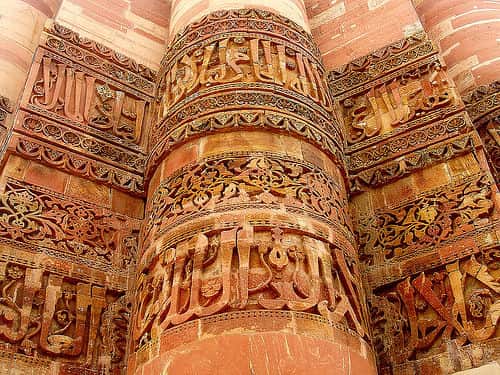
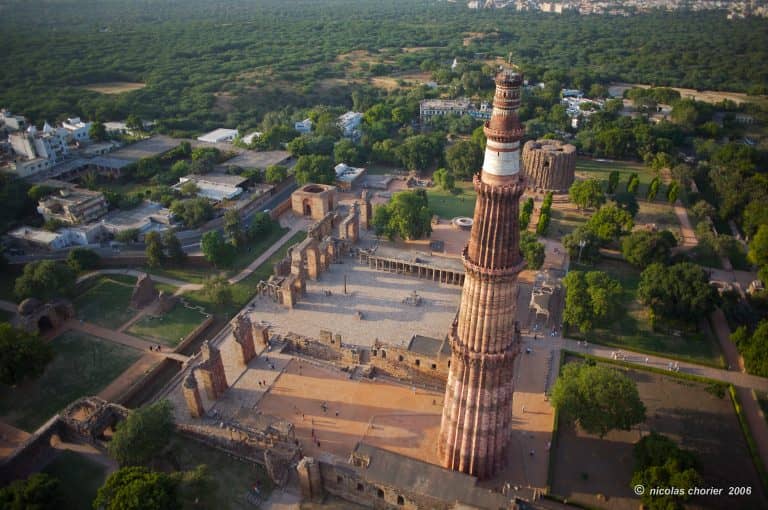
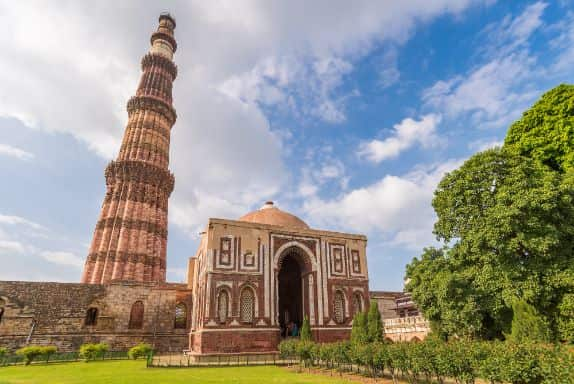


Practical Information for Visitors
As you plan your visit to the Qutub Minar and its complex, it’s essential to have the right information:
Visiting Hours and Days
The Qutub Minar is open seven days a week. You can explore its beauty from 7 AM to 9 PM, ensuring ample time to soak in the historical and architectural splendor.
Entry Fees
To enter this magnificent monument, Indian tourists are required to pay a nominal fee of Rs 35 per head. For foreign visitors, the entry fee is Rs 550. The good news is that children below 15 years of age can enjoy the Qutub Minar for free.
Cameras and Photography
Photography is permitted within the complex, allowing you to capture the beauty and history of the Qutub Minar. However, if you plan to use tripods or engage in commercial photography, additional permits may be necessary.
Accessibility and Nearest Metro Station
For those using Delhi’s efficient metro system, the nearest metro station to Qutub Minar is the aptly named Qutub Minar Metro Station on the Yellow Line, located just 1.8 kilometers away. From there, you can either book a cab or rickshaw or enjoy a leisurely walk to the monument.
Online Ticket Booking
For added convenience, you can book your tickets for the Qutub Minar online, avoiding long queues and ensuring a hassle-free visit.
Exploring the Qutub Minar
The Minaret’s Interior
While many visitors admire the Qutub Minar from the outside, a journey to the top offers a unique perspective. The minaret boasts a spiral staircase with 379 steps that lead to breathtaking views of the surrounding area. As you ascend, the inscriptions and carvings on the walls offer a fascinating glimpse into history.
Other Attractions within the Complex
Beyond the Qutub Minar itself, the Qutub Complex has much more to offer. Take the time to explore the intricacies of the Quwwat-ul-Islam Mosque, marvel at the rust-free Iron Pillar, and admire the architectural wonders of Alai Darwaza and the Tomb of Iltutmish.
Lesser-Known Facts and Trivia
Etymology of “Qutub Minar”
The name “Qutub Minar” carries historical significance. Understanding its origins adds depth to your visit.
Historical Visitor Statistics
Learn about the visitors who have marveled at this iconic monument over the years, and how it continues to draw crowds from across the globe.
Influence on Other Structures
Discover how the Qutub Minar has influenced architecture, both in India and beyond.
Appearance on Delhi Metro Tokens
The Qutub Minar’s significance extends beyond its physical presence, making appearances on Delhi Metro tokens and travel cards.
Illumination Work for Night Tourism
Find out how this monument transforms at night, creating a magical ambiance for night tourists.
Tips and Recommendations for Visitors
Ideal Times to Visit
To truly appreciate the Qutub Minar and its complex, consider visiting during early mornings or weekdays to avoid crowds. The period from October to March offers pleasant weather for exploration.
Precautions and Preparations
While the complex offers several facilities, it’s advisable to come prepared with essentials such as water bottles and comfortable walking shoes.
Guided Tours
Enhance your visit by considering a guided tour. Knowledgeable guides can provide deeper insights into the historical and architectural significance of the site.
Facilities within the Complex
The Qutub Minar Complex is equipped with facilities such as information desks, restrooms, drinking water facilities, wheelchair accessibility, parking, and cloakrooms for visitors’ convenience.
Getting to Qutub Minar
Address and Location
The Qutub Minar is situated at Seth Sarai, Mehrauli, New Delhi, Delhi, making it easily accessible to visitors from various parts of the city.
Transportation Options
Whether you choose to travel by metro, bus, cab, rickshaw, or your vehicle, reaching the Qutub Minar is straightforward.
People Also Read
- Chokhi Dhani Noida
- ISKCON Temple Delhi
- Waste to Wonder Park Delhi
- Pradhanmantri Sangrahalaya
- Just Chill Water Park Delhi
- Garden Of Five Senses
- Sunder Nursery Delhi
- Fly Dining Noida
- KidZania Noida
- Rangmanch Farms Gurgaon
- National Rail Museum
Map to Find Qutub Minar in Delhi
FAQs
Q1: What is the Qutub Minar, and where is it located?
The Qutub Minar is a historic monument located in the Mehrauli area of South Delhi, India. It stands as one of the country’s most iconic landmarks, known for its impressive height and intricate architecture.
Q2: Who built Qutub Minar and why?
Qutub Minar was built by Qutb-ud-din Aibak as a victory tower in 1192 to mark the start of Islamic rule in India.
Q3: What is the significance of the Qutub Minar?
The Qutub Minar holds historical significance as a symbol of victory and as an exceptional example of early Indo-Islamic architecture. It also marks the beginning of Islamic rule in India.
Q4: Can visitors enter the Qutub Minar?
Yes, visitors can enter the Qutub Minar complex. However, access to the top of the minaret itself is restricted due to safety concerns following an accident in 1981.
Q5: What are the entry fees for visiting the Qutub Minar?
The entry fee for Indian tourists is Rs 35 per person, while foreign tourists are charged Rs 550 per person. Children below 15 years of age can enter for free.
Q6: What are the visiting hours of the Qutub Minar?
The Qutub Minar is open all seven days of the week. Visitors can explore the complex from 7 AM to 9 PM.
Q7: Is photography allowed inside the Qutub Minar complex?
Yes, photography is allowed within the complex. However, the use of tripods and commercial photography may require additional permits.
Q8: How can I reach the Qutub Minar using public transportation?
The nearest metro station to the Qutub Minar is the Qutub Minar Metro Station, located on the Yellow Line. You can also reach the complex by bus, cab, or auto-rickshaw.
Q9: What are some nearby attractions to visit along with the Qutub Minar?
Some nearby attractions include the Mehrauli Archaeological Park, Kila Rai Pithora Fort, Jahaz Mahal, and the Garden of Five Senses.
Q10: Is there an annual festival celebrated at the Qutub Minar?
Yes, the Qutub Festival is a three-day event that takes place in November-December at the Qutub Minar. It features cultural performances, music, dance, and food stalls, creating a vibrant atmosphere.
Q11: Is it safe for couples to visit the Qutub Minar complex?
Yes, the Qutub Minar complex provides a safe and romantic atmosphere for couples to explore its historical wonders and serene surroundings.
Q12: Are there facilities like restrooms, drinking water, and parking available at the Qutub Minar complex?
Yes, the Qutub Minar complex offers facilities such as restrooms, drinking water, parking, and wheelchair accessibility to enhance the visitor experience.
Q13: Can I book tickets for the Qutub Minar online in advance?
Yes, you can book tickets for the Qutub Minar online in advance to avoid long queues and ensure a hassle-free visit.
Q14: What is Qutub Minar also known as?
Qutub Minar is also known as Qutb Minar or Qutab Minar.
Q15: What is the best time to visit the Qutub Minar to avoid crowds?
The early morning and weekdays are the best times to visit the Qutub Minar to enjoy the beauty and history with fewer crowds.
Q16: Can I explore the interior of the Qutub Minar?
While you cannot access the upper levels of the Qutub Minar due to safety concerns, you can explore the interior as you ascend its spiral staircase with 379 steps.
Q17: Why is Qutub Minar famous in India?
It’s famous in India for its stunning architecture, historical importance, UNESCO World Heritage status, and being a top tourist spot in Delhi.
Q18: Who built Qutub Minar first?
The initial construction was by Qutb-ud-din Aibak, but it was expanded by subsequent rulers like Shams-ud-din Iltutmish and Firoz Shah Tughlaq.
Conclusion
In conclusion, the Qutub Minar is not just a monument; it’s a living testament to India’s rich history, architectural brilliance, and cultural heritage. As you explore its towering form, intricate carvings, and surrounding complex, you embark on a journey through time. With its enduring presence and captivating stories, the Qutub Minar invites you to step into the pages of history and experience the grandeur of a bygone era. So, plan your visit and let this magnificent marvel unfold its secrets before your eyes.
As you stand in awe of the Qutub Minar, you’ll find yourself not just witnessing history but becoming a part of it, ensuring that its majesty endures for generations to come.
